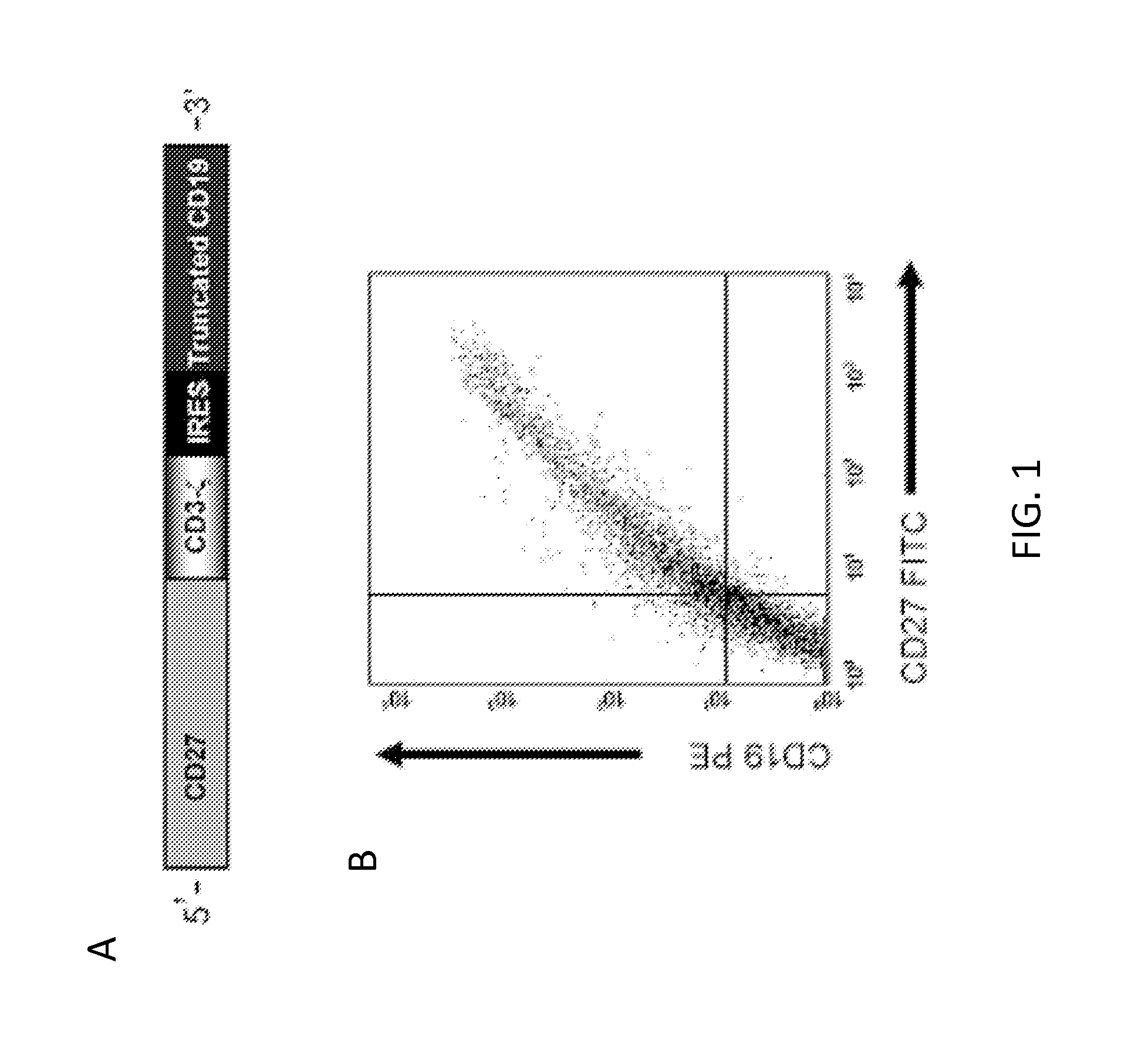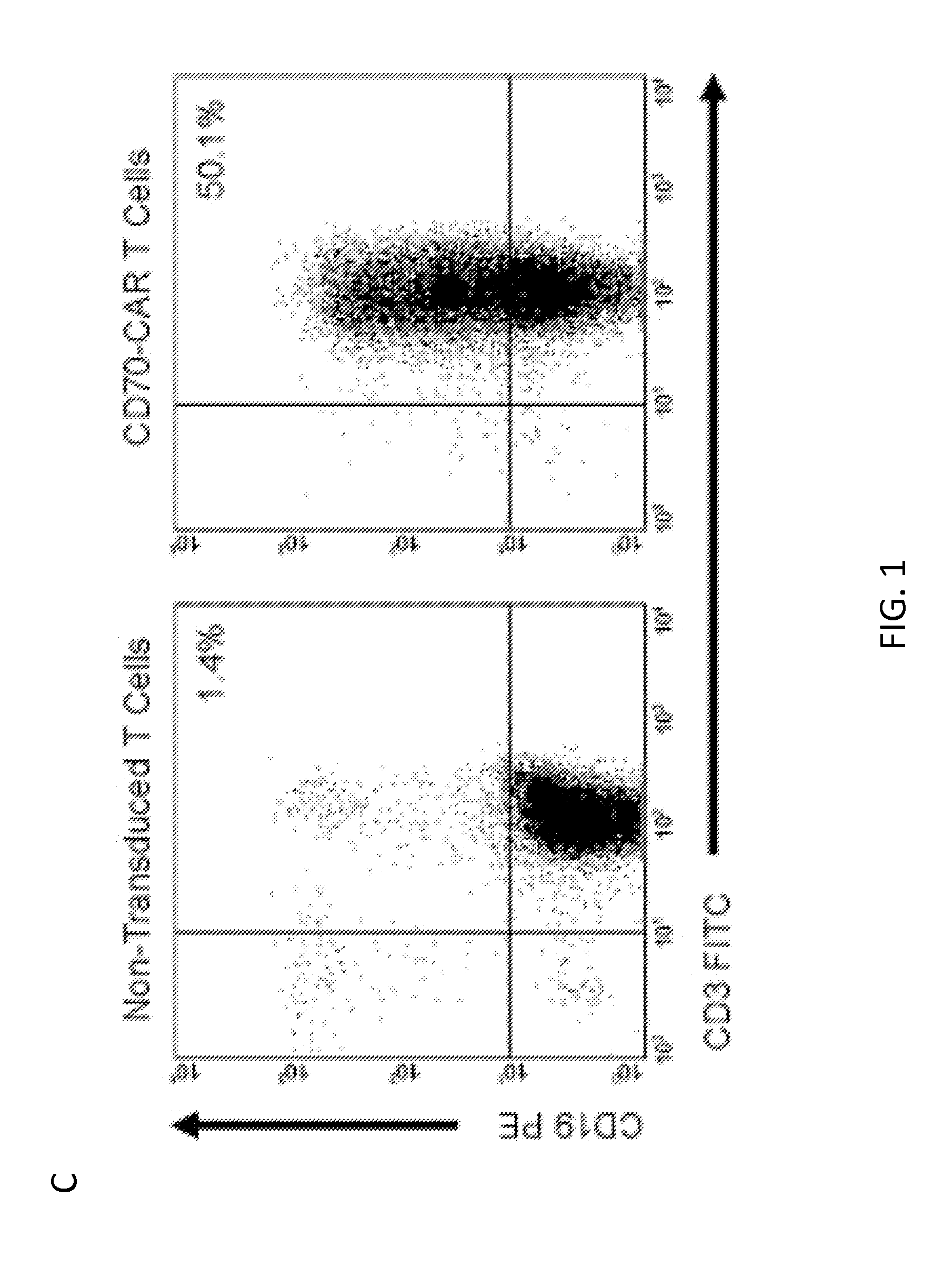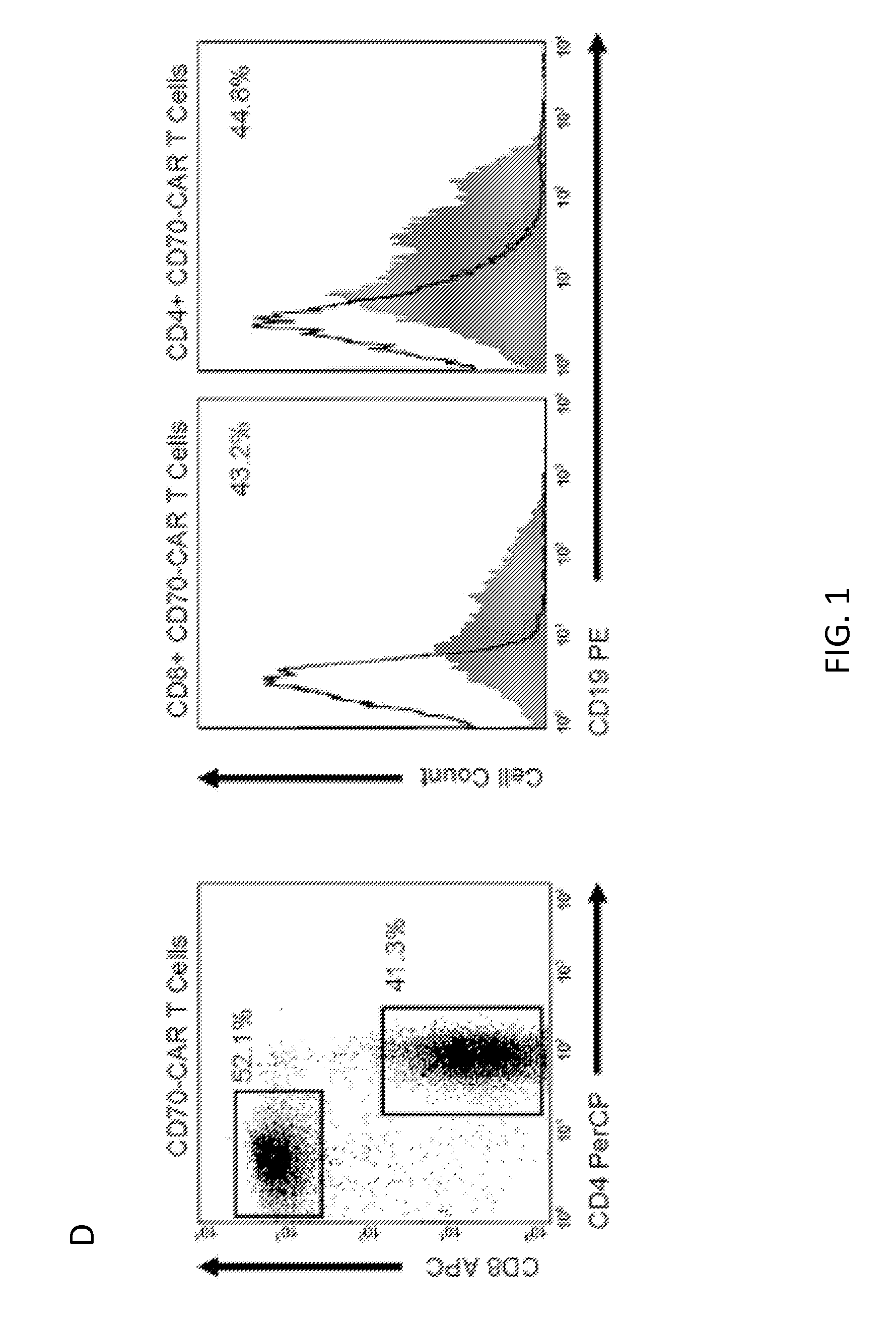Chimeric cd27 receptors for redirecting t cells to cd70-positive malignancies
a cd27 receptor and t cell technology, applied in the field of chimeric cd27 receptors, can solve the problems of prolonged impairment of humoral immunity, and achieve the effect of reducing or preventing tumors
- Summary
- Abstract
- Description
- Claims
- Application Information
AI Technical Summary
Benefits of technology
Problems solved by technology
Method used
Image
Examples
example 1
Exemplary Materials and Methods
[0052]Cell Lines and Tumor Cells
[0053]Protocols to obtain blood samples or primary tumor cells were approved by the Baylor College of Medicine Institutional Review Board (IRB). The cell lines Daudi, CCL-120, U266, and K562 were obtained from the American Type Culture Collection (ATCC, Rockville, Md., USA). K562 cells expressing CD70 (K562.70) were generated by transducing K562 cells with a self-inactivating lentiviral vector encoding human CD70 and GFP. L1236 was obtained from DSMZ (Braunschweig, Germany). SNK6 and SNT16 were kindly provided by Dr. Norio Shimizu (Tokyo Medical and Dental University, Japan). (Nagata et al., 2001) Primary B-cell non-Hodgkin lymphomas, which had been cryopreserved without in vitro culture were provided by Dr. Stephen Ansell (Mayo Clinic, Rochester, Minn., USA).
[0054]Generation of the CD70-Specific CAR Construct
[0055]Full-length human CD27 (CD70 receptor) was fused in frame to the signaling domain (amino acids 52-164) of t...
example 2
Generation of CD70-Specific T Cells
[0074]The inventors constructed an SFG retroviral vector that encoded the CD70 receptor, CD27, fused to the signaling domain of the T-cell receptor ζ chain (CD70-CAR). Because most naive and memory T cells endogenously express low levels of CD27, an IRES-tCD19 expression cassette was also included in the retroviral vector to allow for unequivocal detection of transduced cells (FIG. 1A). CD27 and tCD19 displayed a linear co-expression pattern indicating that tCD19 is a suitable marker for CD70-CAR expression (FIG. 1B). CD3 / CD28 activated T cells were transduced with RD114-pseudotyped retroviral particles encoding CD70-CAR-IRES-tCD19 and 10 to 14 days post transduction the expression of tCD19 was determined by FACS analysis. A mean of 45% (+ / −6; n=5) T cells expressed tCD19, and both CD4- and CD8-positive cells were transduced (FIG. 1C-D).
example 3
CD70-Specific T Cells Secrete Immunostimulatory Cytokines and Proliferate after Exposure to CD70-Positive Tumor Cells
[0075]To detect recognition of CD70 by transgenic T cells, the inventors initially used CD70-negative K562 cells and CD70-transgenic K562 cells (FIG. 2). CD70-specific T cells and non-transduced T cells of 3 donors were stimulated with K562 or K562.CD70, and after 48 hours we measured IFN-γ and IL-2 release (FIG. 3A,B). CD70-specific T cells produced significant amounts of IFN-γ (p=0.03) and IL-2 (p=0.02) after exposure to K562.CD70 as compared to non-transduced T cells. In addition, CD70-negative K562 cells did not activate CD70-specific T cells, indicating that cytokine production requires both the expression of CD70 on target cells and the presence of the CD70-CAR on T cells. There was a similar outcome when the inventors compared T-cell proliferation in each of these culture combinations (FIG. 3C).
[0076]The inventors confirmed the above findings by using tumor cel...
PUM
| Property | Measurement | Unit |
|---|---|---|
| structures | aaaaa | aaaaa |
| length | aaaaa | aaaaa |
| bioluminescence imaging | aaaaa | aaaaa |
Abstract
Description
Claims
Application Information
 Login to View More
Login to View More - R&D
- Intellectual Property
- Life Sciences
- Materials
- Tech Scout
- Unparalleled Data Quality
- Higher Quality Content
- 60% Fewer Hallucinations
Browse by: Latest US Patents, China's latest patents, Technical Efficacy Thesaurus, Application Domain, Technology Topic, Popular Technical Reports.
© 2025 PatSnap. All rights reserved.Legal|Privacy policy|Modern Slavery Act Transparency Statement|Sitemap|About US| Contact US: help@patsnap.com



